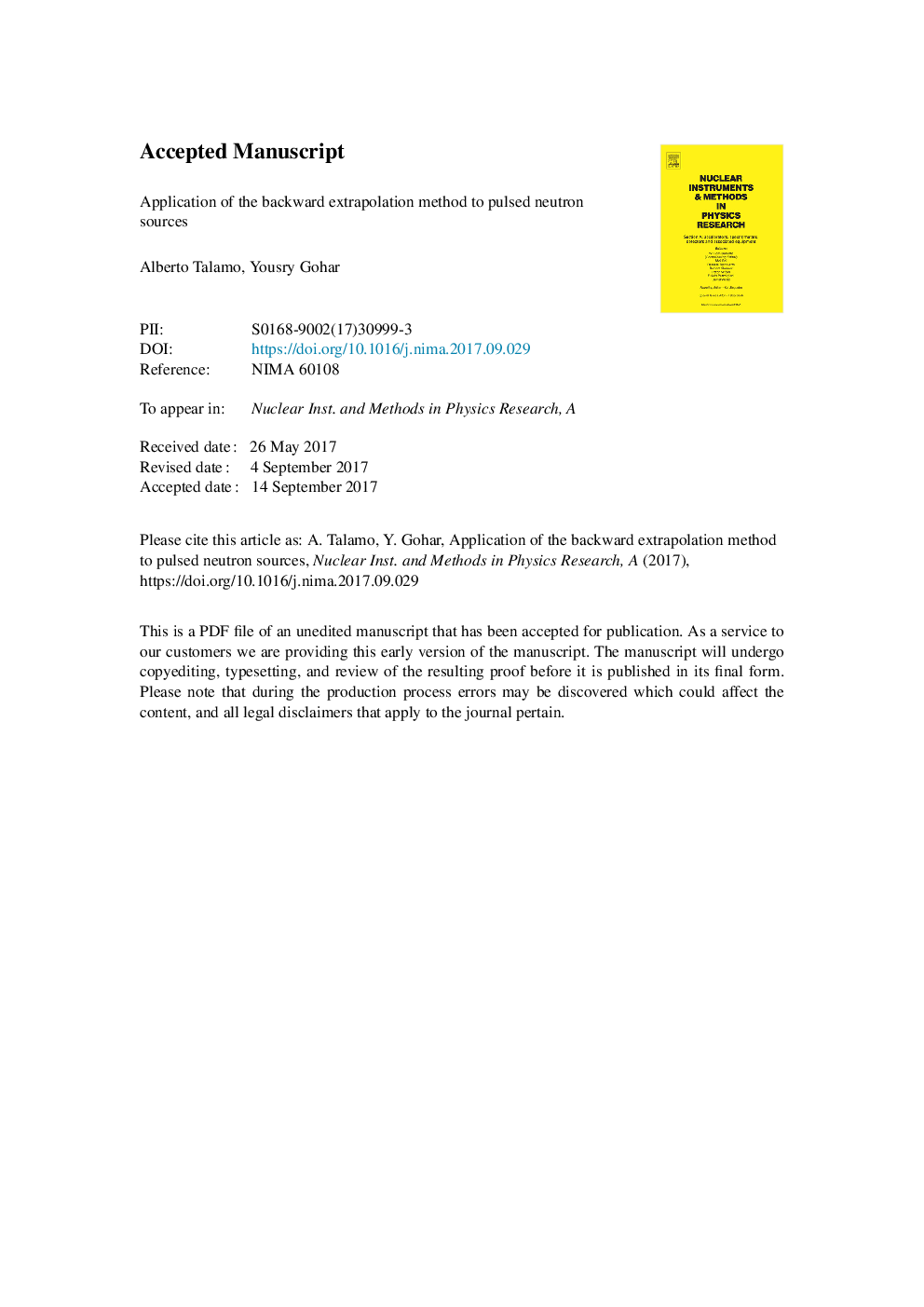| Article ID | Journal | Published Year | Pages | File Type |
|---|---|---|---|---|
| 5492507 | Nuclear Instruments and Methods in Physics Research Section A: Accelerators, Spectrometers, Detectors and Associated Equipment | 2018 | 34 Pages |
Abstract
Particle detectors operated in pulse mode are subjected to the dead-time effect. When the average of the detector counts is constant over time, correcting for the dead-time effect is simple and can be accomplished by analytical formulas. However, when the average of the detector counts changes over time it is more difficult to take into account the dead-time effect. When a subcritical nuclear assembly is driven by a pulsed neutron source, simple analytical formulas cannot be applied to the measured detector counts to correct for the dead-time effect because of the sharp change of the detector counts over time. This work addresses this issue by using the backward extrapolation method. The latter can be applied not only to a continuous (e.g. californium) external neutron source but also to a pulsed external neutron source (e.g. by a particle accelerator) driving a subcritical nuclear assembly. The backward extrapolation method allows to obtain from the measured detector counts both the dead-time value and the real detector counts.
Keywords
Related Topics
Physical Sciences and Engineering
Physics and Astronomy
Instrumentation
Authors
Alberto Talamo, Yousry Gohar,
